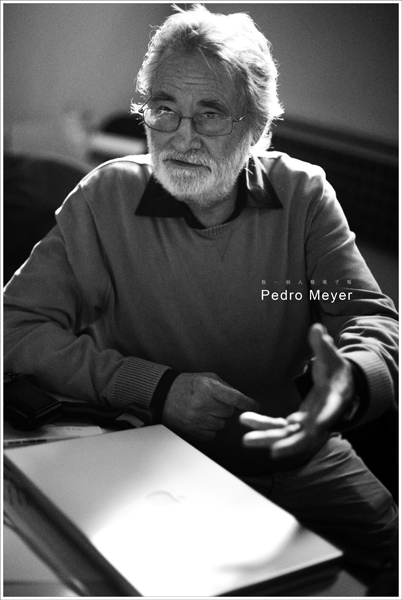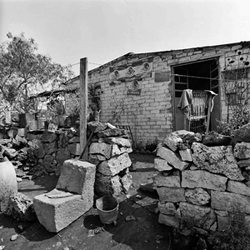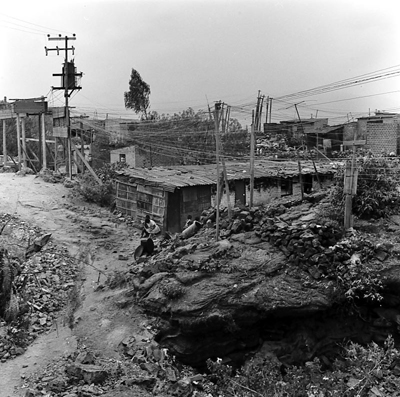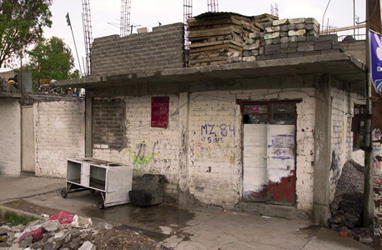 |
by Pedro Meyer
It has been said that democracy is the worst form of government except all the others that have been tried.
Winston Churchill.
 |
I have heard over and over, in many parts of the world. How new digital technologies have an unfair distribution as they follow a pattern of distribution according to wealth. Well, how could we disagree with such a fundamental reality as it applies, in our case, to photography and new technologies? We can’t, can we? Let us look at this with a bit more skepticism and insight as this can actually lead us on to something beyond simple truisms. I would like to say that this lack of equality is not only true with regard to photography and new technologies, but also with regard to access to water, to health care, to education, and so on. So how on earth would someone come up with a statement singling out photography and new technologies from matters that are so much more pressing for the survival of a human being. As you might agree, it does not make a lot of sense to make such an issue about this inequality of distribution about photography and new technologies, when in fact more important factors have not been even remotely resolved for a democratic access to the well being of all mankind. |
With this in mind, I think we can move beyond such rhetoric, as I am sure that in this symposium we shall probably not be able to resolve outright any of these basic inequalities, however we can contribute indirectly in many new ways to make such a destiny less inevitable.
Just this morning the major of Mexico City announced that within three years all parks and schools in the city Will be wired with wi-fi connections that are going to be free for everyone to access. Just a few years ago, the most impoverished areas of Mexico City, all would steal their electricity as you can see in the image. So here in this new digital era, we are going to be wired in very different ways.
©Pedro Meyer
Talking about bench marks… look at this: I found this bench made out of stone back in 1974 when I made the image. And during a recent visit, to that same area I discovered to my big surprise that I had found that same bench only 34 years later, but before we move to the next image, let me point out some things within this image. Observe please, the roof is made from compressed cardboard. Keep in mind the distance from the front wall to the bench.
Now you look at that same bench, only the front wall of the house had moved up to where the bench was. The roof was now made out of concrete and they were in the process of adding a second floor. There was indeed progress.
One of the neighbors had added color to his front wall. And indeed some of the neighbors had done very well for themselves. They remained living in the same neighborhood that they grew up in. Indeed some people left the area, but then others remained and improved it, Just remember how the area looked, not too long ago.
 |
©Pedro Meyer
Well, I am here to report to you some news that give us reasons to believe that there is room for some optimism. We have Coca-Cola all over the planet. This of course is an item to consider for those who are after the fact that every one should have equal access across the globe.
I am sure you get the point, that the notion that suggests that for everyone to have access to something cannot be construed as Democracy of any sort. Having as ubiquitous a product as a Coca-Cola does not necessarily equal Democracy, does it?
Of course I shall remain constrained in my observations to the realm with which I am familiar with, and that is photography in it’s various iterations.
So let us start with something as basic and that has to do with the cost of film. I believe it is a pretty democratic price, when the cost of film has come down to zero. That sort of makes it quiet accessible if that would be the only ingredient to consider. But you and I know that cameras do cost something while the rest of the equipment in the form of a required infrastructure, also needs to be accounted for.
However, the continuous fall in prices for all the gear needed to make pictures gives us a lot of hope to add to the zero price for film.
The ongoing erosion in prices was last reported to be a fall of 30% year to year, over the last few years, this being true for cameras and ancillary digital tools. If the decline in prices could be referenced, let us say, to the price of a Rolls Royce automobile, such a car could today be sold for the equivalent of a pack of cigarettes. Such has been the scale of reduction, in the relationship of prices to what you can get for your money.
I still recall purchasing one of the first hard drives, a ten megabyte Jasmine hard drive in the mid eighties. I thought that drive would last until my great grand children would want to play with such stuff. It cost me $ 2000 US dls. at the time. That would be $ 200 a megabyte.

